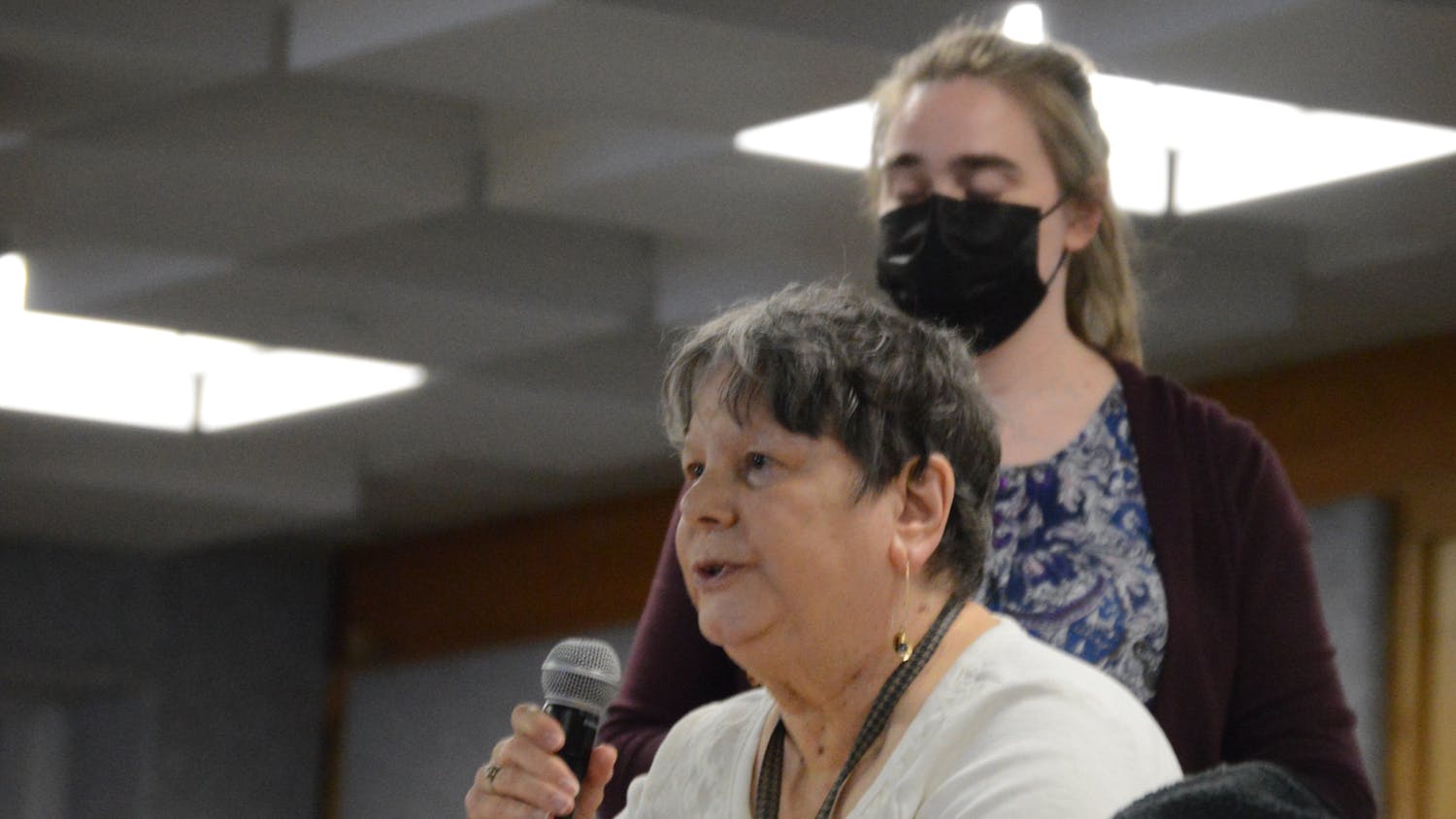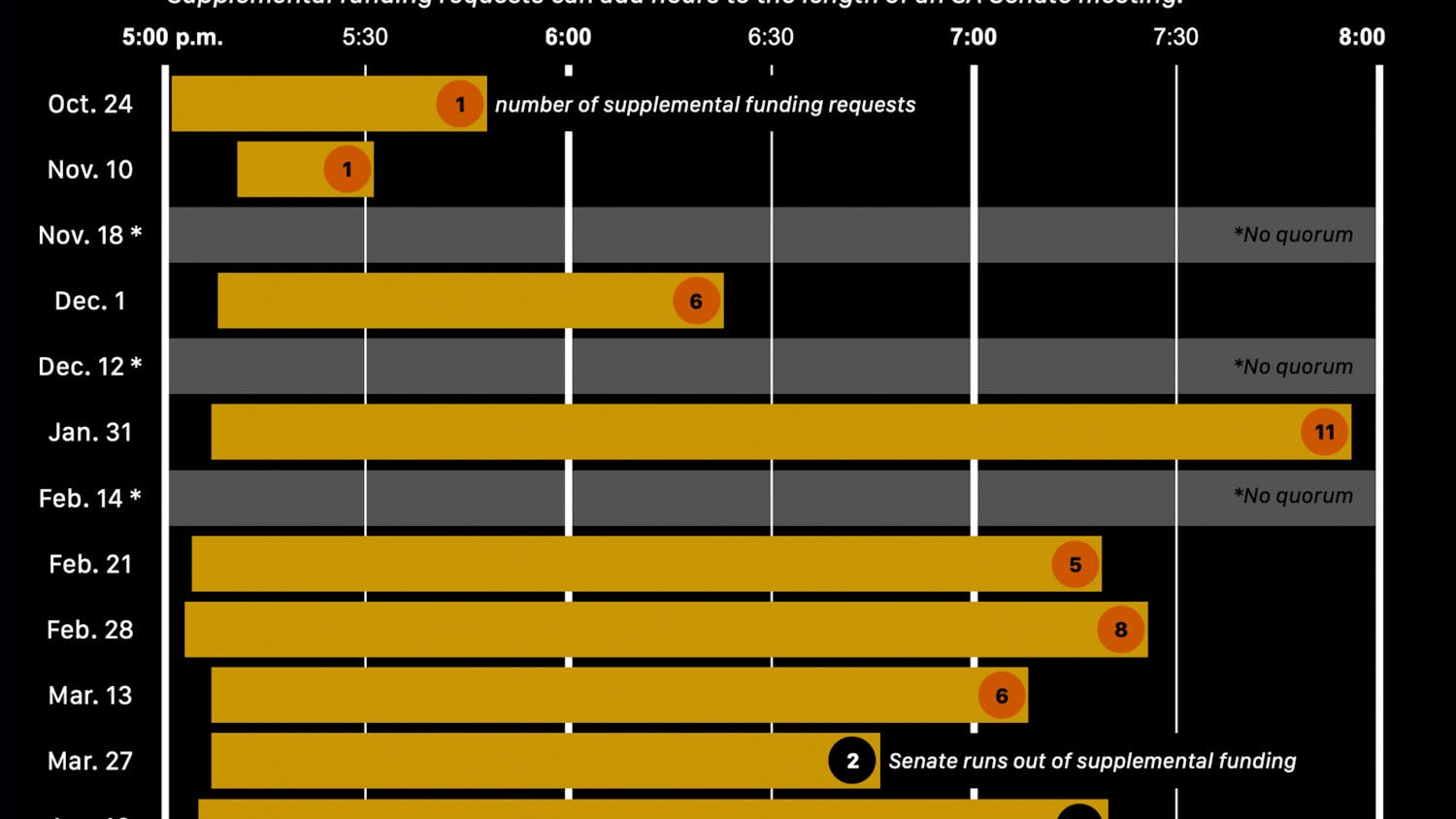Students and faculty are worried about UB’s current asbestos removal taking place during classes.
The university has been removing asbestos, a naturally occurring mineral substance used as insulation material, from three areas on its North Campus: Clemens Hall, Governor’s Hall and the Ellicott Complex. Asbestos-containing materials are present on both North and South campuses and in some buildings downtown, according to Kate McKenna, UB spokesperson.
UB Facilities workers removed asbestos in the residence halls over the summer but are currently working to remove it in Clemens Hall. The university spent $510,000 to remove the material in Governor’s Hall, McKenna said. She could not provide the cost for additional removal.
Although it's used as a construction material, inhaling asbestos particles can lead to serious health issues like lung cancer –– it’s the number one cause of occupational cancer deaths in the world –– and mesothelioma. Asbestos fibers make it a cheap, yet effective building material, but many in the UB community are concerned about the project interfering with their health and classes.
Joseph Valente, a distinguished professor in the English department, said the removal process in Clemens Hall disrupted his class on the tenth floor. He said the numerous workers, loud construction noises and possibility of exposure to asbestos provided him with ample reason to change classrooms. He said he is confused why he was scheduled to teach in Clemens in the first place.
“I remained unconvinced that this whole asbestos problem could simply be contained by shutting doors,” Valente said. “I was unhappy with the prospect of having to take my students up to this classroom and for them to have to be going past this class past potential asbestos danger. Given the fact that they’re all young adults, that’s plenty of time for them to be harmed.”
McKenna said "undisturbed or undamaged" materials that contain asbestos do not pose a threat to occupants. When renovations are done at UB, trained experts will handle the construction materials to follow New York State regulations.
Signs have been posted on all effected buildings notifying students and faculty of the removal.
But most buildings on North and South Campus were likely built with products that include asbestos, McKenna said.
UB acquired the land which makes up North Campus in 1964, and South Campus was built in 1846. Asbestos wasn’t banned by The Environmental Protection Agency until the Clean Air Act was passed in 1970.
Despite its health risks, the United States only bans asbestos products, not the material itself.
McKenna said it poses no risk to humans unless a person comes in direct contact with the material and inhales the invisible, scentless microscopic fibers. Facility workers label and block off areas, warning students and faculty not to enter work zones.
“[Removal or] abatement activities are conducted only as allowed by NYS Code Rule 56 which requires isolation of the abatement area from your work or travel area,” McKenna said. “You cannot inadvertently wander into a containment area. Signage is required to give you guidance; physical barriers will not permit your entry into the space without significant effort.”
McKenna said numerous safety procedures are in place to ensure campus remains safe for the UB community.
“Bulk material sampling is done to identify materials, and air sampling occurs before a project begins and continues throughout the abatement project; air sampling is performed by a third party,” McKenna said. “Both the contractor and consultant are certified to perform their respective work. Enclosures are built to completely seal all air from escaping the abatement area and only allows air to enter.”
The air is filtered through air particulate filters that capture 99.7 percent of all particles down to 0.3 microns in size, according to McKenna.
Although the university has taken measures to protect the community from potential harm, Valente said he didn’t feel comfortable teaching down the hall from the work zone. Valente changed his classroom to Baldy Hall to escape the noise of the removal.
He said he’s still annoyed the issue wasn’t handled during the summer when there are less students walking through university buildings.
“Clearly, this is something from my perspective that’s been mishandled,” Valente said. “This is something that they should've been working on in the summer. This isn’t an annoyance, this is a health risk. If it was just the noise it wouldn’t be ideal, but OK. But the health risk I wouldn’t simply capitulate. I suspect that ever since they added classes during the winter, there’s less time to do maintenance work, thus pushing everything off until the summer and into the fall. They need to find a better system.”
Many students said they were more annoyed with construction getting in the way of their daily routine than the possible threat of asbestos.
Thomas Panzica, a senior mechanical engineering major, said he wishes UB could remove the asbestos when there aren’t so many people walking through Clemens Hall for classes.
“The noise certainly can be very distracting. I wonder why arrangements couldn’t be made to have work done on off hours and not during class time,” Panzica said.
“Communication should also be clear about what they are doing. Maybe administration could give teachers and students options to take classes and exams in different classrooms so their grades won’t be affected. As for the risk of asbestos, I'm concerned, but I feel that as long as regulations are following everyone should be safe.”
Max Kalnitz is the senior news editor and can be reached at max.kalnitz@ubspectrum.com




